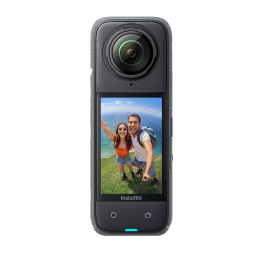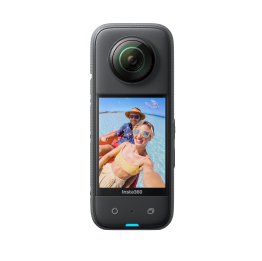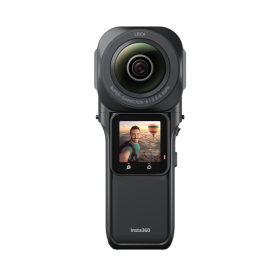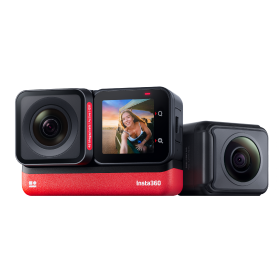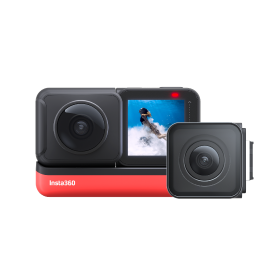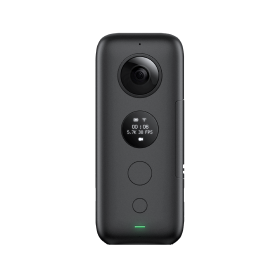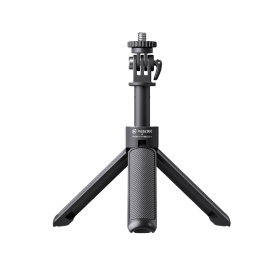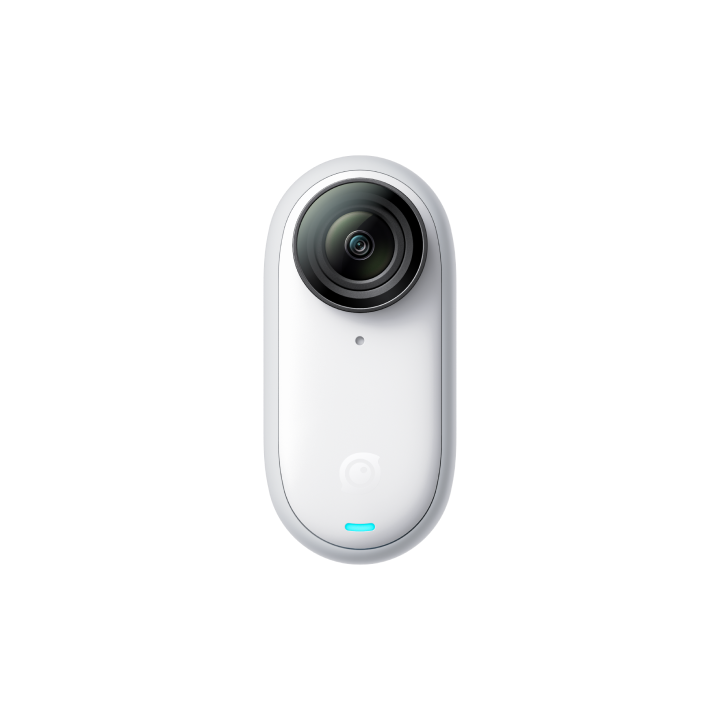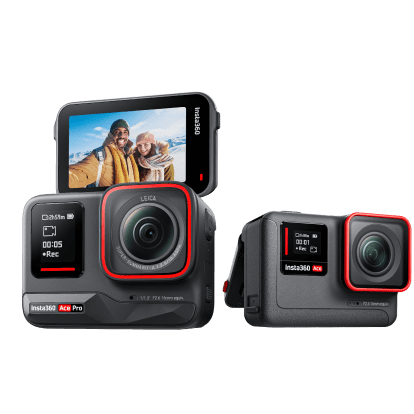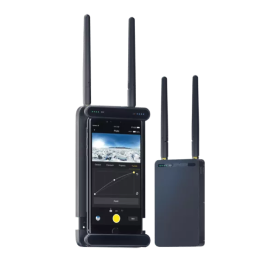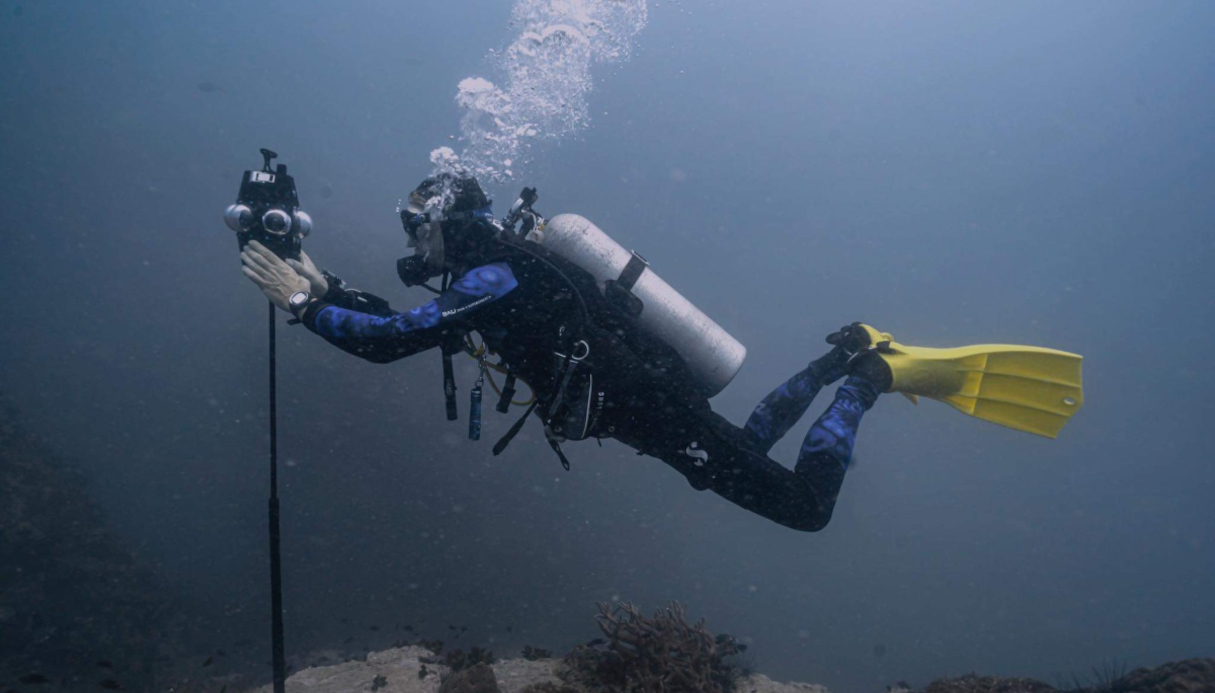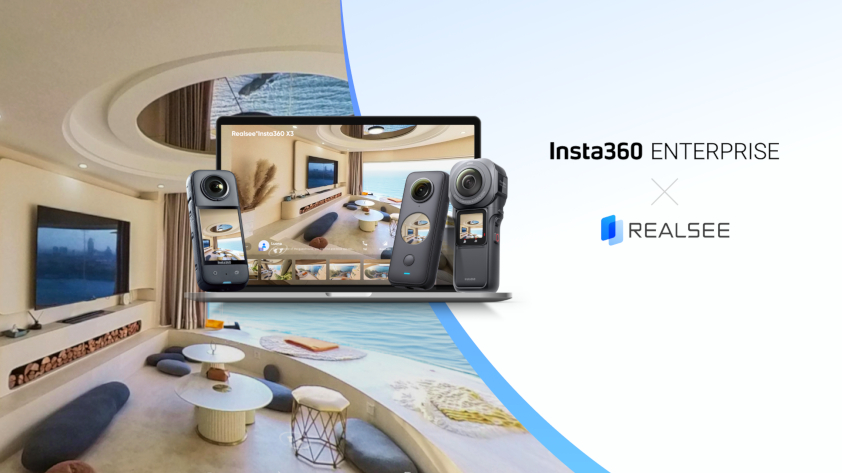“This is incredible, I didn't know that the ocean was like this!” Reactions like these are to be expected when underwater videographer Dimitri Bintein, from Immersive Medium, shows people his work.
The wonder of the ocean is nothing new to Bintein or his Thailand-based team. “When it comes to diving with VR cameras, I think I'm at about 500 dives, which makes me one of the more experienced underwater VR cameramen in the world,” he explains.
Combining years of experience, and an eye for detail, with state of the art recording equipment, Immersive Medium creates breathtaking underwater VR content. Of the 500 dives Bintein has made so far, more than half have been made with his preferred camera and accessory, Insta360 Pro 2 with the innovative Mantis Sub housing rig.
We spoke to Bintein, and Mantis Sub’s Axel Busch, about an incredible VR diving project Bintein recently embarked on, and why Mantis Sub and Insta360 Pro 2 are the only option for serious underwater VR videographers.
The professional underwater 360 camera rig
Mantis Sub is a “smart” housing for underwater VR videography, exclusively designed for Insta360 Pro 2—a lightweight professional VR camera. It allows underwater filmmakers to shoot incredible 8K stereoscopic (3D) footage in perfect 360, thanks to a totally clean zenith and nadir. Manufactured in lightweight aluminum, it has a depth rating of 90 meters. It also boasts an on-board processor and controller to trigger record and stop functions, change recording states, and monitor key data.
The sub features ports for hydrophones, ethernet live streaming and mounting points for rigging and lighting. Camera settings and a detailed log of the unit’s vitals are accessible wirelessly via an app and onboard lithium-ion batteries extend the recording time of the camera. The Mantis is live-streaming-capable and ROV-ready with a detailed integration guide.
An amazing VR diving project
The Immersive Medium team devised a one-of-a-kind project for 2021. It would see them visit wrecks, reefs and pinnacles in search of Thailand’s most spectacular marine life. “We would provide a dive resort with underwater VR diving content, specifically made to promote their services and location, with seven sites chosen based on their ability to reflect a wide variety of dive experiences,” Bintein tells us.
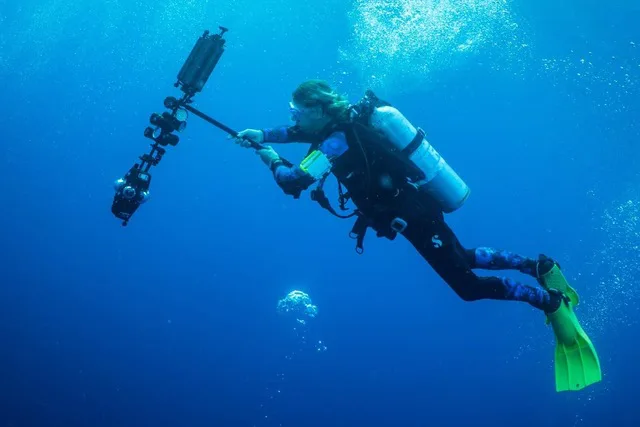
Making these VR diving videos would benefit the dive resort, who could use the footage to promote their location and attract potential customers. The videos would also serve as an educational tool for hesitant first-time divers, and experienced divers who want to make an informed decision on which site to dive.
Like many of their projects before, all of the footage was to be shot with Insta360 Pro 2 and the Mantis Sub housing, of which Bintein is a big fan.
“The Mantis Sub changed everything for me. From quality to functionality to efficiency, the product is not a compromise—it’s a necessity to create professional underwater VR footage.” Dimitri Bintein, Underwater VR Videographer
The challenges of underwater VR filmmaking
Reflecting a world of life and color from 20 meters below sea-level naturally comes with significant, and unique, obstacles. “The logistics of creating underwater VR content is challenging. Besides all of the equipment required, one must take into account the conditions of the water, conditions of the light and the activity of the marine life. All of these things are very important to a regular underwater photographer, but even more so when creating 360 stereoscopic content.”
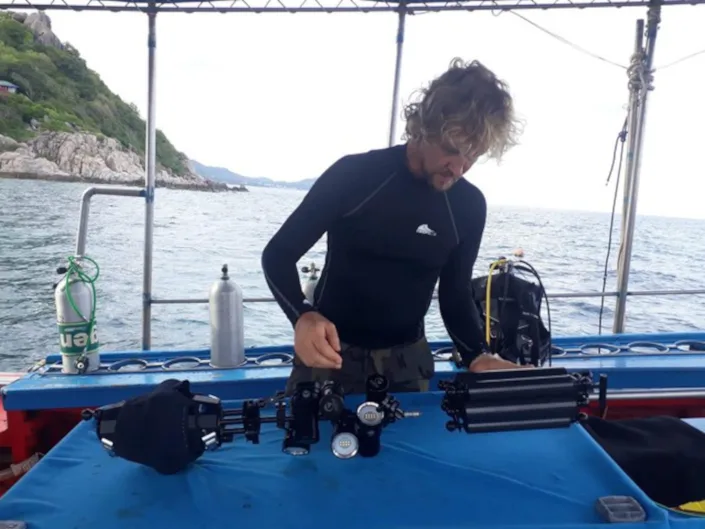
“Another element that we have to contend with is that physics works differently underwater, with phenomena such as absorption and refraction. Basically water affects the way light and color behave. It’s a great challenge to create immersive content that actually has color, and even more difficult to have the color consistent across the entire 360 image.”
“If you don’t meticulously consider all of these factors, the immersive content is simply unusable.”
Capturing the magic
“We spent about 4 weeks on location, filming underwater. We had incredible luck with the marine life and the conditions. We captured dolphins on a Second World War shipwreck, a juvenile whale shark heading directly towards us on a deep pinnacle and we were engulfed in a barracuda tornado, to give just a few examples.”
Bintein and his team were able to capture many of these shots thanks to the remote control functionality of Pro 2. Many underwater 360 cameras lack this capability. As Mantis Sub’s Axel Busch explains, “One of the stand-out features of Insta360 Pro 2 is the ability to control it remotely. On/off and start/stop are essential features that make the housing and sub usable in the field.”
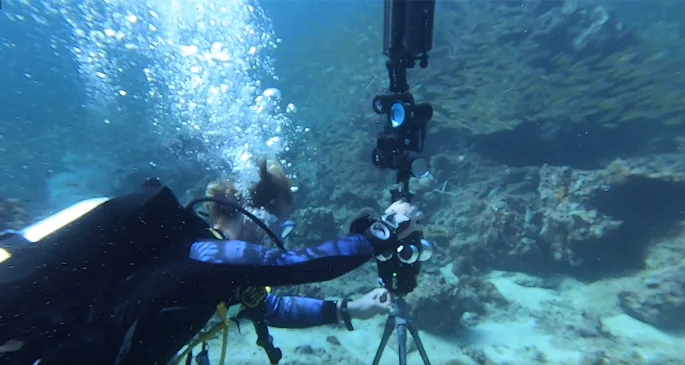
Another crucial feature of Pro 2 is a totally clean zenith and nadir which allow for complete 360 capture. “I can't stress enough how important that is,” Busch continues, “and that depends entirely on the shape of the camera and the spacing of the lenses, which allows us to build a housing that doesn't obstruct the view. It’s impossible to put many other underwater 360 cameras inside a housing and maintain a clean zenith and nadir, due to their shapes.”
Production meets post-production
To turn great shots into great underwater VR video, production and post-production need to act in perfect harmony. It’s an art which requires quality equipment on both sides of shooting. “I have used virtually every available solution on the market, including building camera arrays myself. I was never satisfied with the output and there was no professional solution on the market, until Mantis Sub teamed up with Insta360,” the videographer reveals.
“A finely tuned integration of production and post production is very important in order to work in an efficient way. Having collected hours and hours of raw content, a streamlined process is then needed to take every clip through the different stages of the post production pipeline."
“We use Insta360 Stitcher for all our stitching, because the quality is good and it is the most efficient way of working. Using the right tools is critical to ensure the post-production process doesn’t take forever. Working with other tools, which perhaps give you greater control, often are much more time consuming. I know of some projects which got stuck in post-production, and only got out years later.”
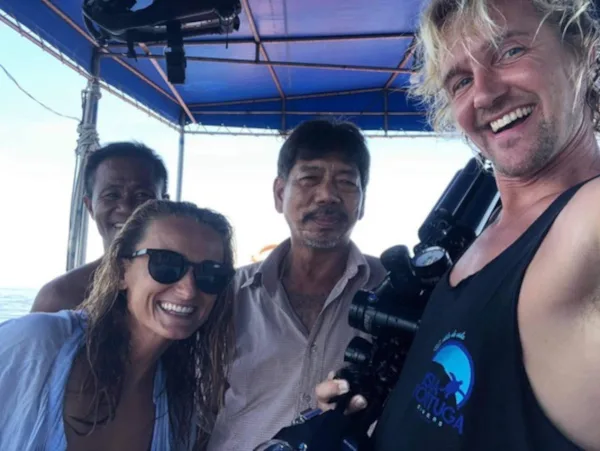
Possible thanks to Mantis Sub and Pro 2
With regards to whether there are other underwater 360 camera/housing combinations that could produce similar results, Bintein is certain.
“I strongly believe that for the type of work we do, stereoscopic content makes the difference. The level of immersion is far greater for underwater content, especially if shot correctly. Other camera rigs I’ve used have nightmarish post-production, below par lenses and getting stereoscopic shots is impossible from them."
"Pro 2 used with Mantis Sub is the only solution for producing professional underwater stereoscopic content.” Dimitri Bintein, Underwater VR Videographer
Busch summarizes, “Only the Insta360 Pro 2 delivers all of the top requirements for a professional underwater 360 camera. It then adds live streaming, stitching and fantastic image stabilization. These add huge value and make it a well rounded package that's easy to use even for beginners. It’s the best off-the-shelf camera for underwater 360 video, and the only one for stereoscopic underwater 360.”
To explore more of Dimitri Bintein’s amazing projects, visit https://immersivemedium.com
Keen to keep up to date on Insta360 stories? Keep an eye on our blog and sign up for our mailing list. You can also contact our Enterprise team directly to see how 360 cameras can benefit your business.
